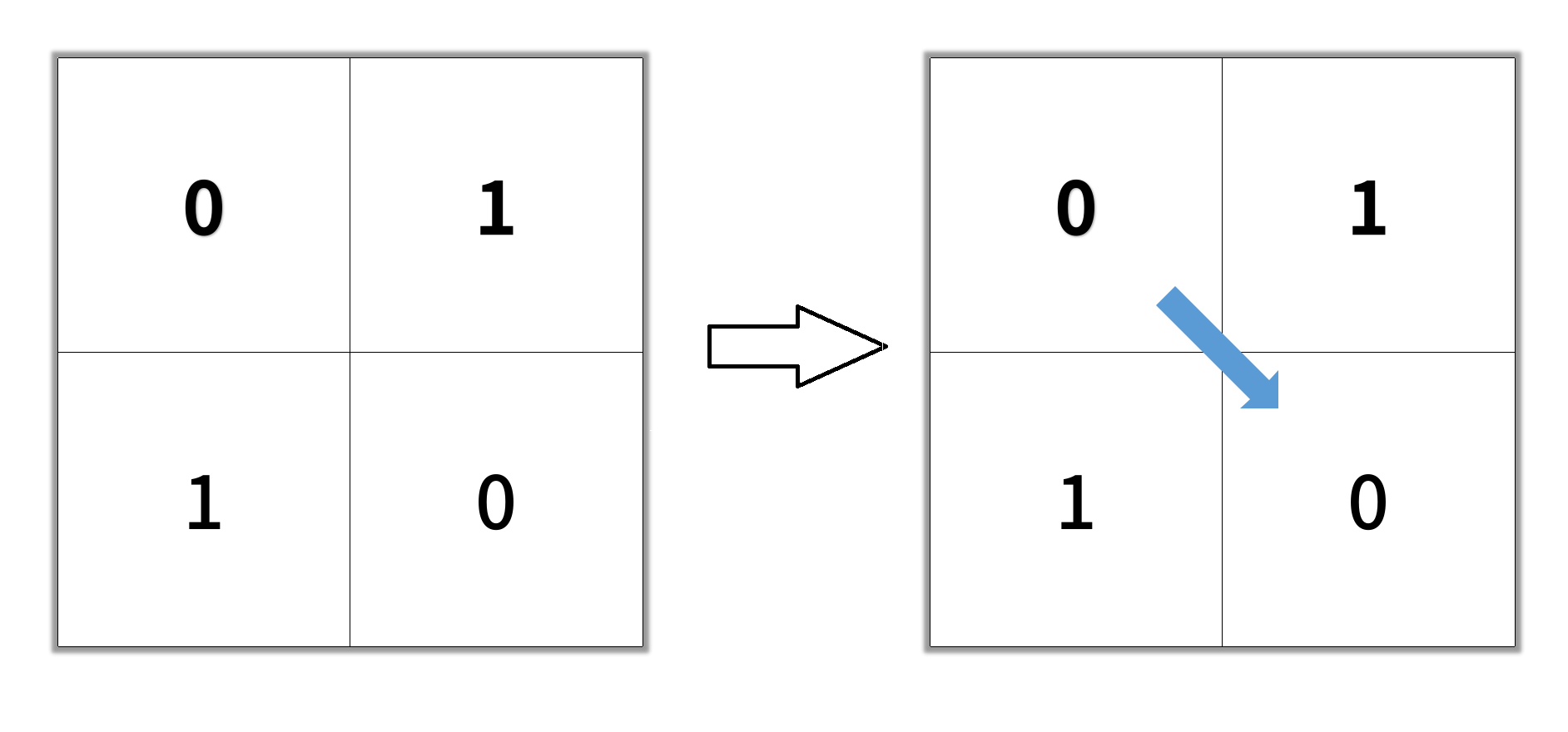Given an n x n binary matrix grid, return the length of the shortest clear path in the matrix. If there is no clear path, return -1.
A clear path in a binary matrix is a path from the top-left cell (i.e., (0, 0)) to the bottom-right cell (i.e., (n - 1, n - 1)) such that:
- All the visited cells of the path are
0. - All the adjacent cells of the path are 8-directionally connected (i.e., they are different and they share an edge or a corner).
The length of a clear path is the number of visited cells of this path.
Example

Input: grid = [
[0, 1],
[1, 0],
];
Output: 2;
Solution
/**
* @param {number[][]} grid
* @return {number}
*/
var shortestPathBinaryMatrix = function (grid) {
//Declare the length of the grid
const n = grid.length;
//If the first cell is blocked, return -1
if (grid[0][0] === 1) return -1;
//If the last cell is blocked, return -1
if (grid[n - 1][n - 1] === 1) return -1;
//Declare the queue
const queue = [[0, 0]];
//Declare the directions
const directions = [
[0, 1],
[0, -1],
[1, 0],
[-1, 0],
[1, 1],
[1, -1],
[-1, 1],
[-1, -1],
];
//Declare the distance
let distance = 0;
//While the queue is not empty
while (queue.length) {
//Increment the distance
distance++;
//Declare the length of the queue
const len = queue.length;
//Iterate the queue
for (let i = 0; i < len; i++) {
//Declare the current cell
const [row, col] = queue.shift();
//If the current cell is the last cell, return the distance
if (row === n - 1 && col === n - 1) return distance;
//Iterate the directions
for (const [x, y] of directions) {
//Declare the next row and column
const nextRow = row + x;
const nextCol = col + y;
//If the next row and column are out of bounds, continue
if (nextRow < 0 || nextRow >= n || nextCol < 0 || nextCol >= n)
continue;
//If the next cell is not 0, continue
if (grid[nextRow][nextCol] !== 0) continue;
//Mark the next cell as visited
grid[nextRow][nextCol] = 1;
//Add the next cell to the queue
queue.push([nextRow, nextCol]);
}
}
}
//Return -1
return -1;
};